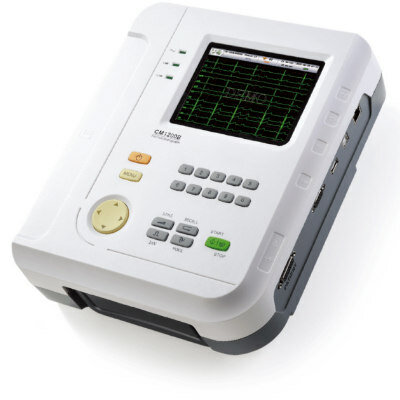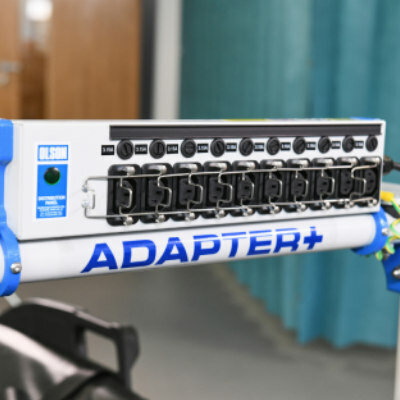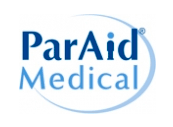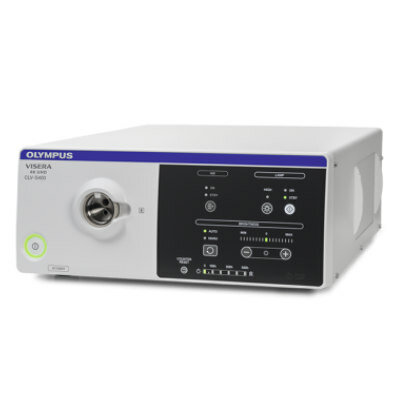Wearable Technology Helps Monitor Babies Health
|
By HospiMedica International staff writers Posted on 25 Jan 2018 |

Image: A prototype flexible sensing element filled with graphene emulsion (Photo courtesy of the University of Sussex).
Functional liquid structures could soon be used to develop wearable health technologies, such as baby sleep suits.
Under development by researchers at the University of Sussex (Brighton, United Kingdom) and the University of Brighton (United Kingdom), the functional liquid structures are created by emulsification of graphene (or other two-dimensional nanomaterials) in water and oil to create functional macroscopic assemblies. Due to the liquid-phase exfoliation of the graphene, the liquid structures exhibit electrical conductivity by inter-particle tunneling. Graphene liquid technology is so sensitive, that when a channel or tube holding the liquid is stretched, even by a small amount, the conductivity of the liquid changes.
The technology opens the way for a range of wearable, flexible, liquid sensors, such as a strain sensing application. With a large gauge factor of around 40--the highest reported in a liquid--the sensors could be integrated into 'fitness tracker'-like bands, or even embedded within the fabric of a sensor vest in order to measure respiration rates and movement. The unobtrusive sensors could also be used for anyone with life-threatening conditions such as sleep apnea. In addition, because graphene is cheap to produce, the new breakthrough should be affordable. The study was published on January 9, 2018, in Nanoscale.
“What we've done is similar to how you might make a salad dressing; by shaking together water and oil, you make tiny droplets of one liquid floating in the other because the two don't mix,” said lead author Matthew Large, PhD, of the University of Sussex. “Normally, the droplets would all collect together and the liquids separate over time, like the droplets in a lava lamp. We've resolved this by putting graphene in. The graphene, which is an atom thick, sits at the surface of the droplets and stops them from coalescing.”
“What's quite exciting about this new type of conductive liquid is how sensitive it is to being stretched. When the graphene particles are assembled around the liquid droplets electrons can hop from one particle to the next; this is why the whole liquid is conductive,” concluded Dr. Large. “When we stretch our sensors we squeeze and deform the droplets; this moves the graphene particles further apart and makes it much harder for the electrons to hop across the system. The sensitivity of this new kind of strain sensor is actually much higher than a lot of existing technologies, and it is the most sensitive liquid-based device ever reported by quite a significant margin.”
Graphene is a monolayer atomic-scale honeycomb lattice of carbon atoms which combines the greatest mechanical strength ever measured in any material (natural or artificial) with very light weight and high elasticity. It also has unique optical and photothermal properties that allow it to release energy in the form of heat in response to light input, and very high electrical conductivity. Andre Geim and Kostya Novoselov of the University of Manchester (United Kingdom) were awarded the Nobel Prize in Physics in 2010 for its development.
Related Links:
University of Sussex
University of Brighton
Under development by researchers at the University of Sussex (Brighton, United Kingdom) and the University of Brighton (United Kingdom), the functional liquid structures are created by emulsification of graphene (or other two-dimensional nanomaterials) in water and oil to create functional macroscopic assemblies. Due to the liquid-phase exfoliation of the graphene, the liquid structures exhibit electrical conductivity by inter-particle tunneling. Graphene liquid technology is so sensitive, that when a channel or tube holding the liquid is stretched, even by a small amount, the conductivity of the liquid changes.
The technology opens the way for a range of wearable, flexible, liquid sensors, such as a strain sensing application. With a large gauge factor of around 40--the highest reported in a liquid--the sensors could be integrated into 'fitness tracker'-like bands, or even embedded within the fabric of a sensor vest in order to measure respiration rates and movement. The unobtrusive sensors could also be used for anyone with life-threatening conditions such as sleep apnea. In addition, because graphene is cheap to produce, the new breakthrough should be affordable. The study was published on January 9, 2018, in Nanoscale.
“What we've done is similar to how you might make a salad dressing; by shaking together water and oil, you make tiny droplets of one liquid floating in the other because the two don't mix,” said lead author Matthew Large, PhD, of the University of Sussex. “Normally, the droplets would all collect together and the liquids separate over time, like the droplets in a lava lamp. We've resolved this by putting graphene in. The graphene, which is an atom thick, sits at the surface of the droplets and stops them from coalescing.”
“What's quite exciting about this new type of conductive liquid is how sensitive it is to being stretched. When the graphene particles are assembled around the liquid droplets electrons can hop from one particle to the next; this is why the whole liquid is conductive,” concluded Dr. Large. “When we stretch our sensors we squeeze and deform the droplets; this moves the graphene particles further apart and makes it much harder for the electrons to hop across the system. The sensitivity of this new kind of strain sensor is actually much higher than a lot of existing technologies, and it is the most sensitive liquid-based device ever reported by quite a significant margin.”
Graphene is a monolayer atomic-scale honeycomb lattice of carbon atoms which combines the greatest mechanical strength ever measured in any material (natural or artificial) with very light weight and high elasticity. It also has unique optical and photothermal properties that allow it to release energy in the form of heat in response to light input, and very high electrical conductivity. Andre Geim and Kostya Novoselov of the University of Manchester (United Kingdom) were awarded the Nobel Prize in Physics in 2010 for its development.
Related Links:
University of Sussex
University of Brighton
Latest Patient Care News
- Surgical Capacity Optimization Solution Helps Hospitals Boost OR Utilization

- Game-Changing Innovation in Surgical Instrument Sterilization Significantly Improves OR Throughput
- Next Gen ICU Bed to Help Address Complex Critical Care Needs
- Groundbreaking AI-Powered UV-C Disinfection Technology Redefines Infection Control Landscape
- Clean Hospitals Can Reduce Antibiotic Resistance, Save Lives
- Smart Hospital Beds Improve Accuracy of Medical Diagnosis
- New Fast Endoscope Drying System Improves Productivity and Traceability
- World’s First Automated Endoscope Cleaner Fights Antimicrobial Resistance
- Portable High-Capacity Digital Stretcher Scales Provide Precision Weighing for Patients in ER
- Portable Clinical Scale with Remote Indicator Allows for Flexible Patient Weighing Use
- Innovative and Highly Customizable Medical Carts Offer Unlimited Configuration Possibilities
- Biomolecular Wound Healing Film Adheres to Sensitive Tissue and Releases Active Ingredients
- Wearable Health Tech Could Measure Gases Released From Skin to Monitor Metabolic Diseases
- Wearable Cardioverter Defibrillator System Protects Patients at Risk of Sudden Cardiac Arrest
- World's First AI-Ready Infrasound Stethoscope Listens to Bodily Sounds Not Audible to Human Ear
- POC Diagnostic Platform Offers Handheld, Instrument-Free PCR Testing for STIs
Channels
Artificial Intelligence
view channel
AI-Powered Algorithm to Revolutionize Detection of Atrial Fibrillation
Atrial fibrillation (AFib), a condition characterized by an irregular and often rapid heart rate, is linked to increased risks of stroke and heart failure. This is because the irregular heartbeat in AFib... Read more
AI Diagnostic Tool Accurately Detects Valvular Disorders Often Missed by Doctors
Doctors generally use stethoscopes to listen for the characteristic lub-dub sounds made by heart valves opening and closing. They also listen for less prominent sounds that indicate problems with these valves.... Read moreCritical Care
view channel
Deep-Learning Model Predicts Arrhythmia 30 Minutes before Onset
Atrial fibrillation, the most common type of cardiac arrhythmia worldwide, affected approximately 59 million people in 2019. Characterized by an irregular and often rapid heart rate, atrial fibrillation... Read more
Breakthrough Technology Combines Detection and Treatment of Nerve-Related Disorders in Single Procedure
The peripheral nervous system (PNS) serves as the communication network that links the brain and spinal cord to every other part of the body. It consists of two parts: the somatic nervous system, which... Read moreSurgical Techniques
view channel
Hydrogel-Based Miniaturized Electric Generators to Power Biomedical Devices
The development of engineered devices that can harvest and convert the mechanical motion of the human body into electricity is essential for powering bioelectronic devices. This mechanoelectrical energy... Read moreWearable Technology Monitors and Analyzes Surgeons' Posture during Long Surgical Procedures
The physical strain associated with the static postures maintained by neurosurgeons during long operations can lead to fatigue and musculoskeletal problems. An objective assessment of surgical ergonomics... Read more.jpg)
Custom 3D-Printed Orthopedic Implants Transform Joint Replacement Surgery
The evolving field of 3D printing is revolutionizing orthopedics, especially for individuals requiring joint replacement surgeries where traditional implants fail to provide a solution. Although most people... Read more
Cutting-Edge Imaging Platform Detects Residual Breast Cancer Missed During Lumpectomy Surgery
Breast cancer is becoming increasingly common, with statistics indicating that 1 in 8 women will develop the disease in their lifetime. Lumpectomy remains the predominant surgical intervention for treating... Read moreHealth IT
view channel
Machine Learning Model Improves Mortality Risk Prediction for Cardiac Surgery Patients
Machine learning algorithms have been deployed to create predictive models in various medical fields, with some demonstrating improved outcomes compared to their standard-of-care counterparts.... Read more
Strategic Collaboration to Develop and Integrate Generative AI into Healthcare
Top industry experts have underscored the immediate requirement for healthcare systems and hospitals to respond to severe cost and margin pressures. Close to half of U.S. hospitals ended 2022 in the red... Read more
AI-Enabled Operating Rooms Solution Helps Hospitals Maximize Utilization and Unlock Capacity
For healthcare organizations, optimizing operating room (OR) utilization during prime time hours is a complex challenge. Surgeons and clinics face difficulties in finding available slots for booking cases,... Read more
AI Predicts Pancreatic Cancer Three Years before Diagnosis from Patients’ Medical Records
Screening for common cancers like breast, cervix, and prostate cancer relies on relatively simple and highly effective techniques, such as mammograms, Pap smears, and blood tests. These methods have revolutionized... Read morePoint of Care
view channel
Critical Bleeding Management System to Help Hospitals Further Standardize Viscoelastic Testing
Surgical procedures are often accompanied by significant blood loss and the subsequent high likelihood of the need for allogeneic blood transfusions. These transfusions, while critical, are linked to various... Read more
Point of Care HIV Test Enables Early Infection Diagnosis for Infants
Early diagnosis and initiation of treatment are crucial for the survival of infants infected with HIV (human immunodeficiency virus). Without treatment, approximately 50% of infants who acquire HIV during... Read more
Whole Blood Rapid Test Aids Assessment of Concussion at Patient's Bedside
In the United States annually, approximately five million individuals seek emergency department care for traumatic brain injuries (TBIs), yet over half of those suspecting a concussion may never get it checked.... Read more
New Generation Glucose Hospital Meter System Ensures Accurate, Interference-Free and Safe Use
A new generation glucose hospital meter system now comes with several features that make hospital glucose testing easier and more secure while continuing to offer accuracy, freedom from interference, and... Read moreBusiness
view channel
Johnson & Johnson Acquires Cardiovascular Medical Device Company Shockwave Medical
Johnson & Johnson (New Brunswick, N.J., USA) and Shockwave Medical (Santa Clara, CA, USA) have entered into a definitive agreement under which Johnson & Johnson will acquire all of Shockwave’s... Read more
















